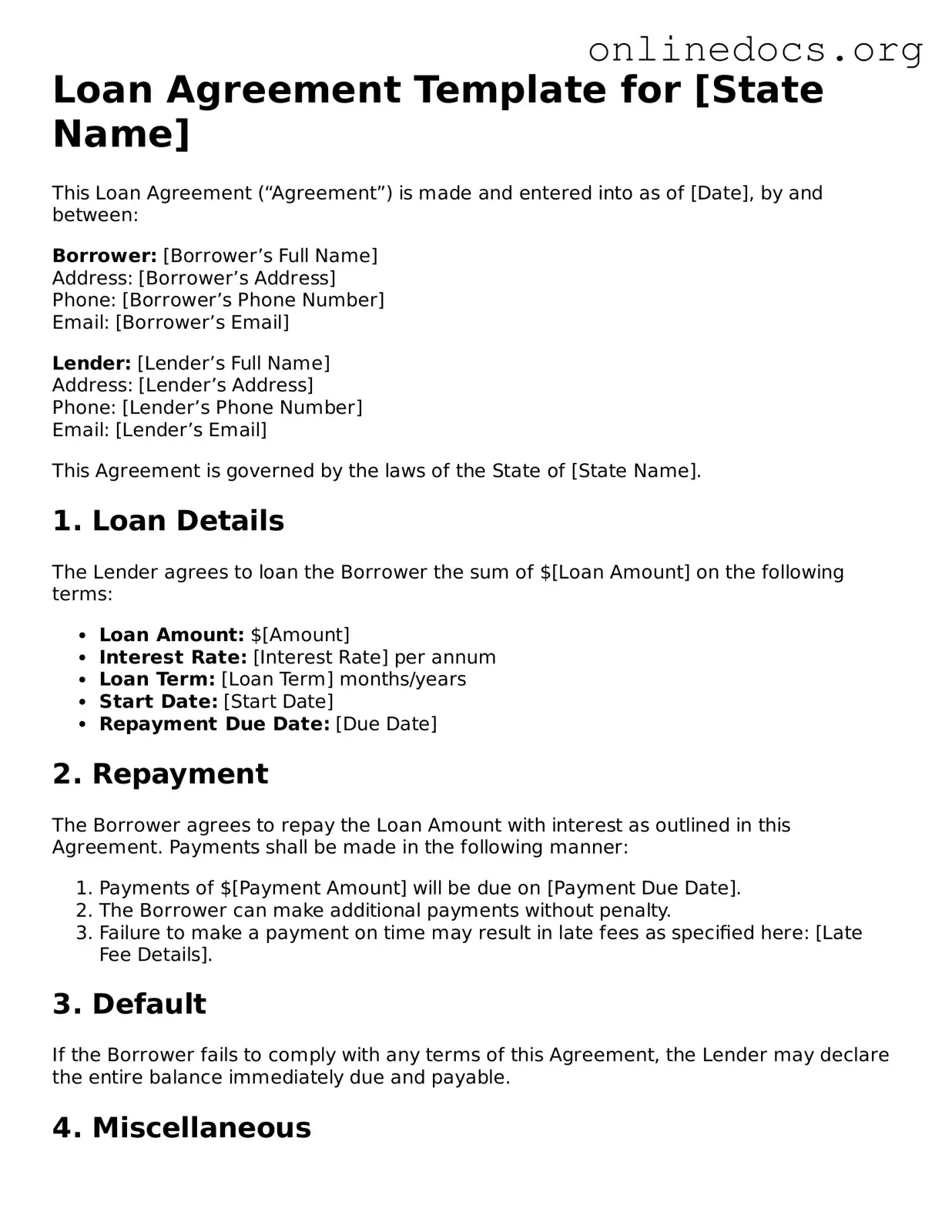A promissory note is a document that serves as a written promise to pay a specified sum of money to a lender at a predetermined time. Like a loan agreement, it outlines the terms of the loan, including the interest rate and repayment schedule. However, a promissory note is typically less detailed than a loan agreement and may not include all the covenants or conditions that a loan agreement would specify. This simplicity makes promissory notes more straightforward, but they can also carry risks if the borrower does not fully understand the implications of the terms.
A mortgage agreement is another document closely related to a loan agreement, particularly in real estate transactions. It secures the loan with the property itself, meaning if the borrower fails to repay, the lender can take possession of the property. While a loan agreement focuses on the terms of borrowing, a mortgage agreement includes additional details about the property and the lender's rights in the event of default. Both documents work together to protect the interests of the lender while outlining the obligations of the borrower.
A credit agreement is similar to a loan agreement but is often used for revolving credit, such as credit cards or lines of credit. It specifies the terms under which credit can be accessed, including interest rates, fees, and repayment terms. While a loan agreement usually pertains to a fixed sum of money, a credit agreement allows borrowers to draw on a credit line as needed. Both documents aim to clarify the responsibilities of the borrower and the lender, but they cater to different types of financial arrangements.
An installment sale agreement is another document that shares similarities with a loan agreement. In this arrangement, the buyer agrees to pay for a product or service in installments over time, often with interest. The seller retains ownership of the item until the final payment is made. Like a loan agreement, this document outlines payment terms and conditions, but it is typically used for tangible goods rather than cash loans. Both agreements protect the interests of the seller while ensuring the buyer understands their payment obligations.
A lease agreement can also be compared to a loan agreement, particularly in the context of financing equipment or property. In a lease, one party pays to use an asset owned by another party for a specified period. The lease agreement details the terms of use, payment schedules, and responsibilities for maintenance. While a loan agreement involves borrowing money with the intent to purchase, a lease agreement allows for temporary use without ownership transfer. Both documents emphasize the importance of clear terms and mutual obligations.
An investment agreement shares some characteristics with a loan agreement, particularly in the context of funding a business. This document outlines the terms under which an investor provides capital to a company in exchange for equity or debt. While a loan agreement focuses on repayment terms, an investment agreement may include profit-sharing arrangements and other conditions related to the investor's role in the business. Both documents are essential in establishing the framework for financial relationships, ensuring that all parties understand their rights and responsibilities.
A partnership agreement is another document that can be likened to a loan agreement, especially when one partner provides a loan to the partnership. This document outlines the terms of the partnership, including capital contributions, profit-sharing, and decision-making processes. While a loan agreement typically involves a borrower and lender, a partnership agreement involves multiple parties working together toward a common goal. Both agreements aim to clarify expectations and responsibilities, fostering a cooperative environment.
To facilitate secure transactions, consider utilizing a reliable informative bill of sale template. This document is essential for ensuring that the transfer of ownership is properly recorded and legally recognized.
A security agreement is similar to a loan agreement in that it provides collateral for a loan. This document outlines the specific assets pledged by the borrower to secure the loan. In the event of default, the lender has the right to seize the collateral to recover their losses. While a loan agreement focuses on the terms of the loan itself, a security agreement provides additional protection for the lender by detailing the collateral involved. Both documents work in tandem to ensure that both parties understand their rights and obligations.
A forbearance agreement can also be compared to a loan agreement, particularly when a borrower is struggling to meet their repayment obligations. This document outlines the terms under which a lender agrees to temporarily suspend or reduce payments. While a loan agreement establishes the original terms of borrowing, a forbearance agreement modifies those terms to provide relief to the borrower. Both documents are crucial in maintaining a clear understanding of the evolving financial relationship between the borrower and lender.
